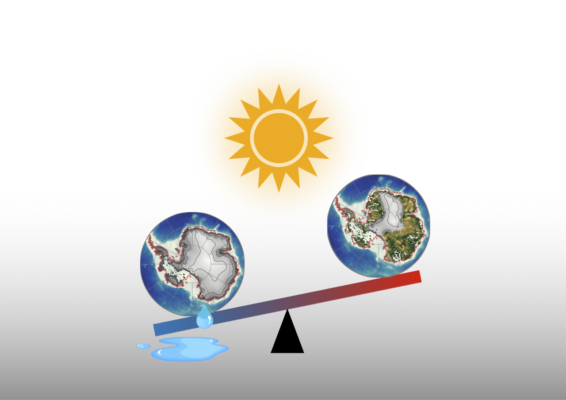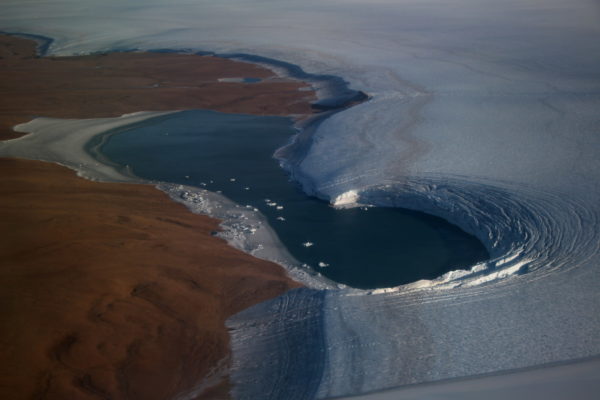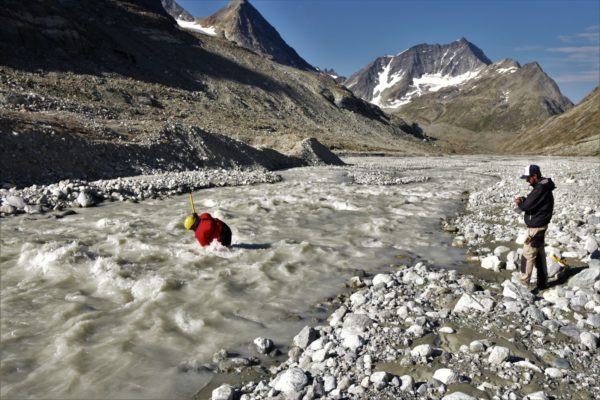
Simple illustration of the concept of multi-stability and tipping points of an ice sheet: the stability of the large Antarctic Ice Sheet can be seen as a seesaw. It starts off stable on the left side, but as temperatures rise, the ice starts to melt and lose mass, resulting in the left side of the seesaw getting progressively lighter. Up to a certain threshold, the seesaw remains stuck in its initial position, but upon transgressing the critical threshold, the system flips over, the seesaw switches into the right state which is associated with a much smaller ice sheet. Figure credit: J. Garbe.
Perhaps you have stumbled upon the word ‘hysteresis’ before, for example in connection with the stability behavior of our Earth’s large ice sheets and their long-term effect on global sea-level rise, or the long-term stability of the Atlantic Meridional Overturning Circulation, or even in another context outside earth/climate science. Or you might have come across this term during your studies, bu ...[Read More]





![Lost in transl[ice]tion…](https://blogs.egu.eu/divisions/cr/files/2020/10/MainFigure-700x292.png)
